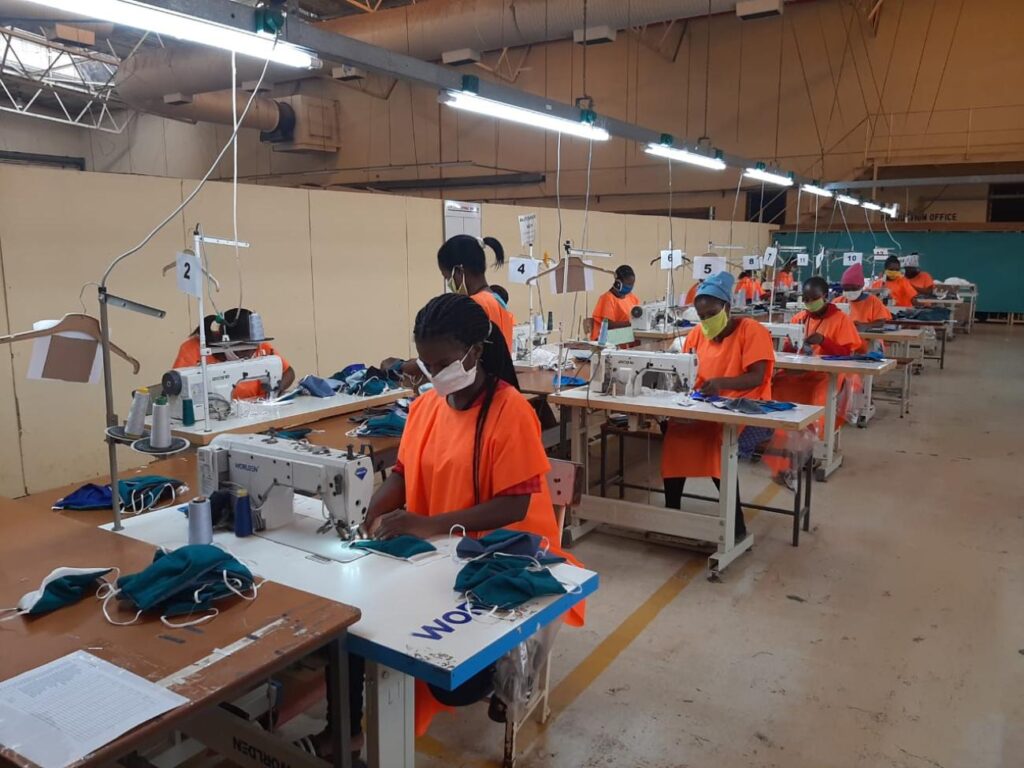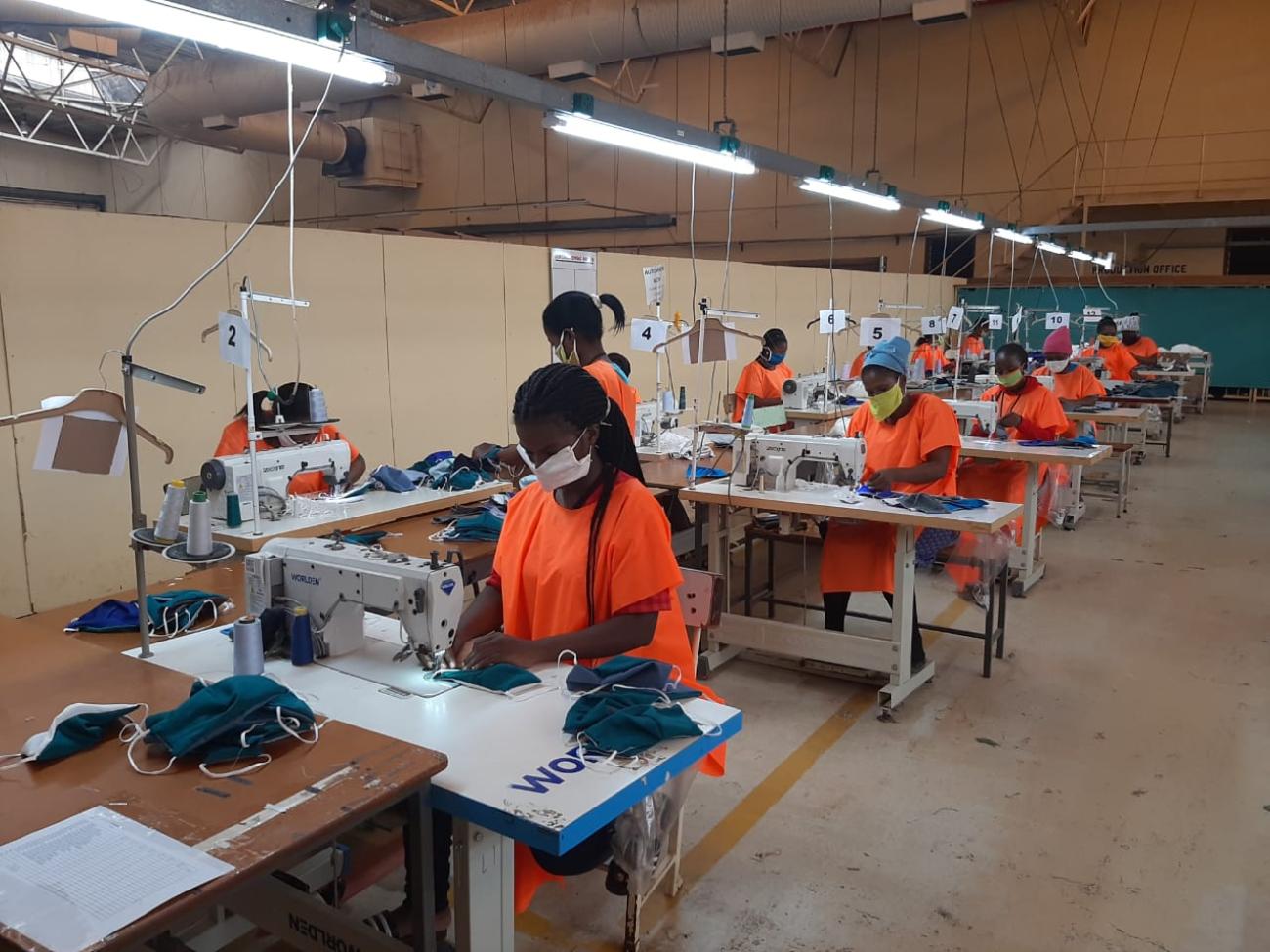
By Phephile Motau
Eswatini is not taking full advantage of the African Growth Opportunity Act (AGOA). The country, according to a report by the US International Trade Commission (USITC) fact-finding investigation on AGOA performance, has a below-average AGOA utilisation rate.
The AGOA utilisation rate is the rate at which U.S. imports of AGOA-covered products from an AGOA beneficiary claim the AGOA preference.
The USITC undertook the fact-finding investigation on the AGOA programme and it is aimed at providing an overview of the program and industry case studies to better understand the relative competitiveness of each sector and its impact on workers, economic development, and poverty reduction.
Program Usage, Trends, and Sectoral Highlights Act (AGOA): Program Usage, Trends, and Sectoral Highlights, was requested by the U.S. House of Representatives Committee on Ways and Means (Committee) and the House noted that the current program will expire on September 30, 2025.
The USITC investigation has a specific topic on the apparel and textile sector which states that the country’s textile and apparel exports have not recovered since the country regained its eligibility status in 2017.
Eswatini is said to be a notable sub-Saharan African apparel producer and one of the largest exporters but primarily supplies the South African apparel market and exported very little to the United States in 2021. This has led to detrimental effects on workers’ rights. At the time, Eswatini manufacturers sought regional buyers, instead of former U.S. ones.
Wages
Researchers are said to have conducted a qualitative analysis of southern Africa’s apparel regional value chains and found that Eswatini’s loss of AGOA benefits contributed to lower wages and weaker trade unions in Eswatini compared to South Africa.
“Despite regaining benefits in 2018, U.S. imports from Eswatini did not grow significantly between 2018 and 2021,” the report states. Conversely, South African apparel imports from Eswatini had been growing quickly since 2010. Eswatini’s exports of apparel to South Africa grew from $57.6 million in 2010 to $209 million in 2022, and it was South Africa’s largest SSA supplier of apparel in that year.
Read More: Good news for 1 762 retrenched Tex Ray workers
It further states that in the early years of AGOA, quota-constrained Taiwanese investors established apparel manufacturing in Eswatini to take advantage of duty-free and quota-free access under the program. After 2005, when MFA quotas ended, an increasing number of South Africans invested in the industry, and they focused on apparel production for that market.
U.S. apparel imports from Eswatini also fell between 2000 and 2021, after quickly reaching a peak in 2004. The institute said Eswatini started as a smaller supplier to the United States than Mauritius and South Africa, and its apparel industry grew quickly under AGOA but has fallen under recent times.
Poverty Reduction
Meanwhile, the institute found that the overall impact of AGOA on regional integration, workers, underserved communities, and economic development in AGOA beneficiary countries appears to be minimal outside of certain countries and sectors.
Assessing the impact of AGOA on regional integration, workers, economic development, and poverty reduction is challenging, given that so many factors can influence these outcomes. AGOA had a positive but limited impact on exports to the United States from AGOA beneficiaries as a whole.
While the positive impact on exports is documented, especially in certain countries, there is scant literature connecting AGOA to these other areas.
Meanwhile, Tex Ray Eswatini Management Manager Wanlong Chow in a previous interview responded to why the local textile and apparel industry was having challenges trading under AGOA.
He said they had challenges with some of the stringent laws which came with the AGOA, including the audits that are carried out by their international customers. He said they came to the country to have audits on the labour relations including occupational health issues. AGOA more beneficial to foreigners than emaSwati.
Front
Many AGOA beneficiaries have been foreign countries using Africa as a front to gain access to the US market. These are the assertions of Kefa M. Otiso, Professor of Geography, at Bowling Green State University and Francis Owusu, Professor and the Chair of the Department of Community and Regional Planning, at Iowa State University who have an article published on the AGOA website.
The article makes certain arguments on key issues on the table as the US revisits its trade relations with African countries. According to the article, the AGOA legal framework has helped to provide beneficiary countries in sub-Saharan Africa with liberal access to the US market.
Read More: EU Carbon tax will not squeeze Eswatini exports but…
In addition, it has increased trade and investment ties between the US and sub-Saharan Africa. It has also created over 300 000 jobs in the region, especially in the apparel sector. It was stated that however, not all sub-Saharan African countries have benefited from AGOA and their manufacturing sectors remain weak. Most of Africa’s exports under AGOA are still dominated by apparel products. In addition, many of the AGOA beneficiaries have been foreign companies that are using Africa as a front to gain access to the US market.
Meanwhile, the government says it is working on several strategies to ensure that the country fully utilizes AGOA and to ensure that it benefits local companies as much as it benefits foreign directors. This is according to the Minister of Commerce, Industry and Trade Manqoba Khumalo. He said they have been seeing extensions of the preference now up to 2025.
Exports
Khumalo said the non-reciprocal generalized system of preferences initially provided for 4 600 product lines, which was later increased to 6 500 items that included amongst others the textiles. The minister said in 2018 Eswatini exported products worth about E234 million ($13 million) to the US. The top exports included sugar E108 million ($6m), perfumery, cosmetics E18 million ($1m), special other repairs about E17 million ($942 000), electrical machinery E15.1 million ($839 000) and machinery E13.8 million ($769 000).
He added that in 2021, Eswatini was supported by USAID to develop a National AGOA Utilization Strategy to guide required support for the development of identified export products to increase exports through diversification of products within the specific product lines.
“Textiles and Apparel are third in the top 10 list of recommended priority products after Mixtures of Odoriferous Substances and Mixtures (including alcoholic solutions used as raw materials in the industry and the manufacture of beverages), sugar and sugar confectionaries,” Khumalo said.
He also said the country also has thick timber, firewood, beverages, handicrafts, horticulture and citrus and agro-processing, jewellery and semi-precious stones and leather and leather products.
“AGOA might be seen to be benefitting FDIs in the country, especially in the textile and apparel sector however the Eswatini Investment Promotion Authority (EIPA) is working around the clock to present a level playing field for both the domestic and foreign investors,” he said.
FDI
Khumalo also said all the incentives provided to the FDI are also made available to the domestic investor as long as they can meet the requirements including the standards required to access the US market.
He said the Department of Industry was in the process of reviewing its National Industrial Policy, which is also a tool to assist in creating a conducive environment for a variety of industries to thrive and therefore access external markets including the AGOA market.
Khumalo added that the coming into force of the African Continental Free Trade Area (AfCFTA), although its focus is mainly on intra-continental trade, however, once capacitated entrepreneurs will be free to export to any market in the world where Eswatini is receiving a generalised system of preference.
He said the ministry in collaboration with United Nations Economic Commission for Africa (ECA) is developing a National AfCFTA Strategy and Implementation Plan and a draft strategy is already in place and will be validated by the national stakeholders next week.
“The strategy has identified a number of national value chains (VCs) where textile is amongst the priority areas because it has a potential to allow for the participation of many Eswatini businesses at various stages of the VCs,” Khumalo said.
He added that these identified national VCs will feed into the regional value chains and the continental value chains.
AfCFTA
“We envisage to see more emaSwati leverage on this AfCFTA capacity building programme for them to access a variety of markets,” Khumalo said.
The minister said the European Union is also funding a project on ‘Jobs and Growth’ which is implemented by the International Trade Centre (ITC). The project identified two main VCs: agro-processing and handicraft.
Read More: African leaders point out gaps in US-Africa trade
“We have seen some processed foods from companies such as Black Mamba and Eswatini Kitchen gracing some supermarket shelves abroad, which will further be strengthened by the implementation of this project as both companies are beneficiaries of the project. The selected handicraft groups have also started exporting to the South African market and they have the potential to penetrate the AGOA market,” Khumalo said.
He also said they hoped that the discussions at this year’s AGOA Africa Forum will give guidance on how they can encourage our businesses to take advantage of the benefits. Mavela Sigwane, the Head of Transformation of the Federation of Eswatini Business Community (FESBC) said they were working on strategies with the government to ensure full utilization of AGOA.
Trade Issues
Sigwane said they had jointly established a State Business Relations (SBR) Program led by the office of the Prime Minister which will ensure that the state and business have an established system related to trade issues in both domestic and international trade.
“FESBC and Business Eswatini are jointly working towards reviewing our memorandum of understanding (MoU) to ensure that we take an integrated approach towards trade issues within and outside the country, which has been identified as an area for improvement from a business perspective,” he said.
Sigwane said FESBC, through the International Labour Organisation (ILO), is already in a program to establish bilateral agreements with similar federations in about 17 countries that are affiliates of ILO so that they get their members closer to the international trade hubs that have high economic returns. He said these included Kenya, Nigeria, America, and other European countries.




